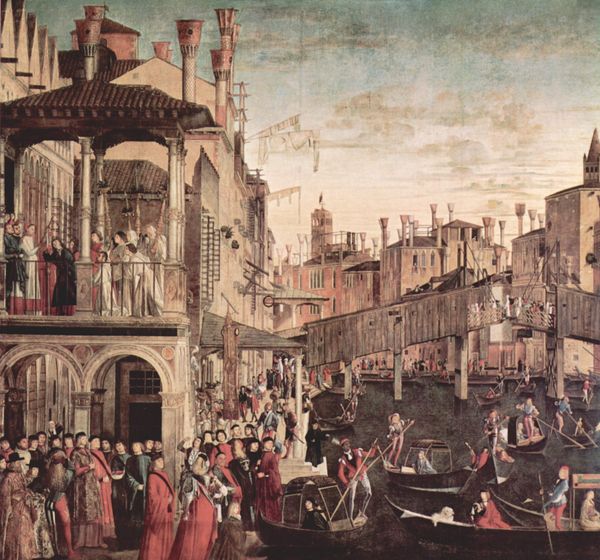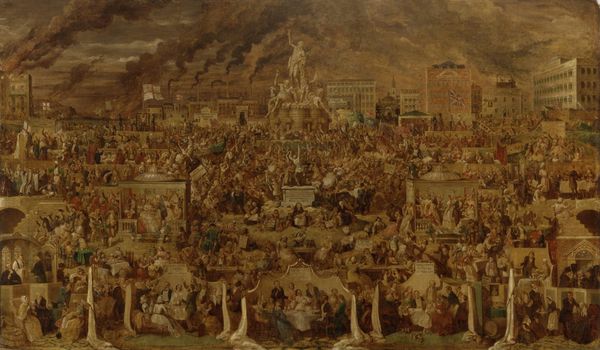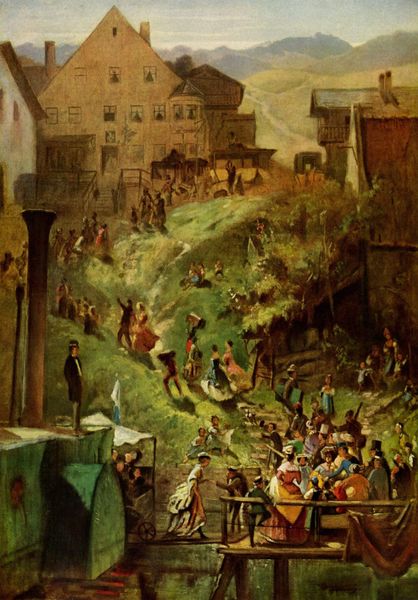
painting, oil-paint
#
painting
#
oil-paint
#
landscape
#
figuration
#
11_renaissance
#
oil painting
#
christianity
#
genre-painting
#
history-painting
#
northern-renaissance
Dimensions: 74.8 x 61.2 cm
Copyright: Public domain
Curator: What an extraordinary piece! This is Albrecht Altdorfer's "Susanna in the Bath," an oil painting created around 1526. You can find it in the Alte Pinakothek in Munich. Editor: My immediate reaction is… theatrical. The architecture dominates, almost overwhelming the human figures. It feels like a stage set more than a real space. And what materials! I’d love to know what went into the pigment mixing. Curator: That architectural grandeur is significant. Altdorfer was working within the context of the Renaissance's revival of classical forms, but his approach is distinctly Northern European, a kind of fantasy architecture rooted in the socio-political landscape of 16th century Germany. The wealth on display is immense. Editor: Absolutely. And consider the oil paint itself: layered glazes, building depth, a real demonstration of wealth and access to precious materials and the skilled labor involved in its application. Even Susanna's garments, the likely cost of their production. I want to see this painting under raking light to understand Altdorfer’s process! Curator: The story of Susanna is a popular one—an innocent woman falsely accused of adultery. Artists used the subject to explore themes of justice, voyeurism, and female virtue. In this time, the role of powerful men making those decisions was brought to the front. The placement of the bathing Susanna on display speaks to her level of power. Editor: That contrast between Susanna's vulnerability and the sheer, opulent *weight* of the setting is so compelling. And to imagine Altdorfer in his workshop, grinding pigments, building layer upon layer… this artwork speaks volumes about labor. Not only Susanna's but the people and systems needed to allow her to be here, under watch, at all. Curator: It truly provides insight into the complex interactions of social standing and judgment during the Northern Renaissance. Thank you. Editor: Yes, it allows for deep material consideration as to how power can be translated into the painted object. A remarkable piece.
Comments
No comments
Be the first to comment and join the conversation on the ultimate creative platform.













